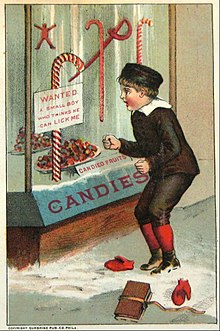The history of the candy cane
Courtesy of nature.desktopnexus.com
Candy canes have been a symbol of Christmas for many years.
The candy cane is a typical trademark of the Christmas season, however, the seasonal treat may have a more religious background than commonly believed. The modern candy cane craze originated during the 17th century in Europe with the invention of pulled sugar that allowed for the newfound creation of different types of candies.

The origin of candy canes dates back to Christmas Eve in 1670 with a German choirmaster at the Cologne Cathedral in Cologne, Germany. He handed out sticks of sugar to the members of his young choir as a means of quieting them during the Christmas Eve Mass. The choirmaster then molded the sugar sticks into shepherd’s’ staffs, or the “J” shape, to honor the holiday, according to history.com.
The first documented example of the use of candy canes to celebrate Christmas was in 1847. Mr. August Imgard, a German-Swedish immigrant living in Wooster, Ohio, decorated his Christmas tree using paper ornaments and candy canes, according to candyhistory.net.
A candymaker in Georgia in the 20th century made history with mechanization of the Christmastime candy. Mr. Bob McCormack began the mass production of candy canes wrapped in cellophane, according to gpb.org. The manufacturing process was groundbreaking at the time as candy canes were previously only made locally. Prior to this new technology, making candy canes was a tedious task that few were able to perfect. Spangler Candy Company, a family-owned private company founded in 1906, further allowed for the proliferation of candy canes as a holiday treat. Today, Spangler Candy Company produces 2.7 million candy canes daily in 24 different flavors, according to fooddive.com.

Before the automation of mass production, candy canes were only made with the color white. At the turn of the 20th century, the red stripes, as well as the signature peppermint flavor, emerged as the popular choice, coining the modernized candy cane. The addition of the red stripes prompted several theories about its meaning and symbolic nature. Some Christians believe that the red stripes symbolize the bloodshed of Jesus, and the white cane is representative of the purity of His spirit. It is also believed that the peppermint flavor is a nod to the herb hyssop, a member of the mint family with historic roots in the Bible’s Old Testament, and symbolic of both purification and sacrifice, according to candyhistory.net.
The candy cane is now a traditional symbol of the Christmas holiday worldwide. The production of 1.76 billion candy canes annually makes it the number one non-chocolate candy sold in the month of December, with 90 percent of sales between Thanksgiving and Christmas, according to candycanefacts.com.
Featured Image by nature.desktopnexus.com

Libby is ecstatic to be back in the Newsroom for another engaging school year. She cannot wait to share her passion for journalism with the staff writers...


